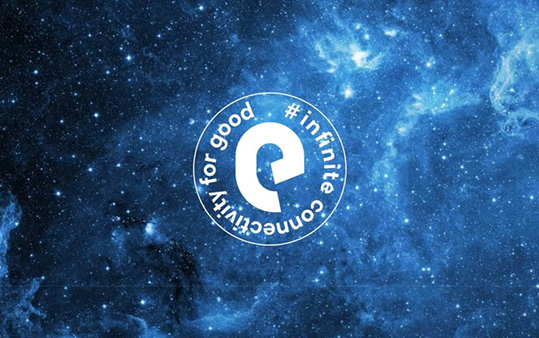When it comes to entertainment on television, quality is king.
As professionals in the industry, it is our responsibility to the end-user and to our businesses to identify where quality is affected and why. Let’s examine some of the benefits of delivering content at a quality people expect today.
What level of quality do people expect?
If the statistics are to be believed, it’s clear that consumers worldwide are interested in a high-quality viewing experience.
The Leichtman Research Group found that in 2015 over 81% of households in the United States had at least one high definition television set (HDTV), and over half of all households had multiple HDTVs. More recently, India has seen a boom in the demand for HD television, with an increase of over 140% from 2017 to 2019, and in more developing parts of the world, this trend is continuing. Today, around half of TV homes in Kenya and Nigeria have HD TV sets (Eutelsat TV Observatory 2019), and over 60% of TV homes in the Middle East and North Africa have been HDTV equipped since 2017. (Eutelsat TV Observatory 2017).
Worldwide consumer demand for HD and Ultra High Definition (UHD) TV sets has led to a continuous increase in the average size of TVs being bought. In 2016 the average screen size purchased was 40 inches, with these TV sets expected to be overtaken by UHD screens by 2018 in Europe and by 2020 across Africa and the Middle East. IHS predicts that this year 79% of Western European TV sets will be HD enabled, with 70% of all Central European TV sets and 64% of all TV sets in North Africa and the Middle East.
Consumers around the world are investing in better technology to have clearer, more vibrant images. This puts more pressure on broadcasters and service providers to deliver content and service of premium quality.
What are the benefits of delivering a quality viewing experience?
Advertisers rely on consumers to spend time watching content. The higher the quality of that content, the more influence an advert will have.
High quality shows that have large amounts of capital invested in the production have been proven to attract more viewers. Netflix recently revealed that over 76 million people have watched the Witcher, a television series with a production budget estimated at over $80 million. The Witcher was filmed in Ultra HD 4k quality, signalling a vested interest in image quality for the creators and viewers alike. This lends more support for the mass migration of content providers moving towards 4k and Ultra HD, a trend seen with broadcasters like the BBC shooting the vast majority of their dramas and documentaries in 4k.
However, It’s not just the quality of the creative content itself that dictates viewership. It’s the overall viewing experience.
Every stage of development impacts the bottom line for content creators, broadcasters and advertisers. Viewership increases with better creative media as well as consistent video compression, reliable streaming and how clear the images are. Conversely, a quality issue at any stage of development can negatively impact the final video for the end-viewer, adversely affecting viewership and ad revenue.
One potential quality bottleneck in the developmental cycle is low bit-rates, something that greatly affects UHD and 4k video streams.
Research shows that when bit-rates are increased, the viewing duration of live video streaming can triple, and The Nielsen Company found that HDTV is responsible for about 3% more prime-time viewing than lower quality streaming.
Following this trend, content providers are delivering in higher quality streams. All major international news channels distributing via satellite in Western Europe are now broadcast in HD, and almost all the main pay-TV documentary channels broadcast via satellite in Western Europe are in HD, making it difficult for competitors to provide SD quality only.
Consumers are simply not choosing lower quality viewing when HDTV is now an option, and advertisers are also taking note.
As far back as 2012, advertisers have begun a mass exodus from lower quality broadcasting. Advertisers in North America advertising on HD channels more than SD. In 2019, entertainment advertisers expanded their marketing by 25% on HD channels in India, with some other categories expanding 8.5 times more on HD broadcasting.
What can broadcasters do to appeal to viewers and advertisers?
To keep up with this technological progress and deliver an optimum viewing experience, broadcasters must ensure that high-quality video streams are transmitted throughout their distribution networks, satellite, cable, IPTV, Digital Terrestrial Television or Over-The-Top.
Here are a few considerations that broadcasters can take into account:
Image quality a key success factor for broadcasters
As discussed above, image quality is becoming the primary factor for viewers and advertisers alike, and broadcasters should take notice of this if they wish to stay competitive. Thus, image quality is a key competitive differentiation factor for both pay-TV operators and free-to-air broadcasters.
Many forms of media, channels and creative content will only choose to present their content in high quality. The broadcaster who can provide the best and most consistent quality will have access to better content, more viewers and a larger amount of advertisers.
Excessive video compression in satellite distribution can reduce image quality broadcast
Different types of content require different compression parameters. For example, sport, action films and documentaries generally have higher spatial and temporal complexity than news or cartoons. Processing these spatial and temporal complexities is a fundamental part of video compression.
Excessive compression occurs when a significant amount of errors are detected in comparing the original source with the received video sequence. Several objective methodologies can be applied to alleviate this, such as Peak Signal-to-Noise Ratio (PSNR) and Multi-Scale Structural Similarity (MS-SSIM). However, the bottom line is that end-user experience is a question of perception and often goes beyond technical or objective factors. Viewers are more sensitive to quality degradation as they prefer quality content.
Increasing bandwidth has a direct positive impact on image quality
Strong, fast and stable connections to services can dramatically increase image quality for viewers. Thus, investing in the most optimal connectivity services can attract more advertisers and revenue streams for the broadcaster.
One such option for better connectivity includes satellite solutions, which are a proven resource for developed and remote areas alike. Recent developments in satellite connectivity have made this option more attractive than ever for broadcasters who want to invest in quality streaming.
Connect With Eutelsat
No matter how broadcasters may approach the challenges of high-quality streaming, the fact remains that quality and clarity will remain the primary benchmarks of success for television into the future.
The best way a broadcaster can secure high-quality viewing experience for their service is to invest in a reliable connectivity solution. Eutelsat offers satellite connectivity solutions that are fast, reliable and powerful, and designed specifically around the needs of a modern broadcaster.
Contact us today and unlock a world of possibilities for your broadcasting needs.



